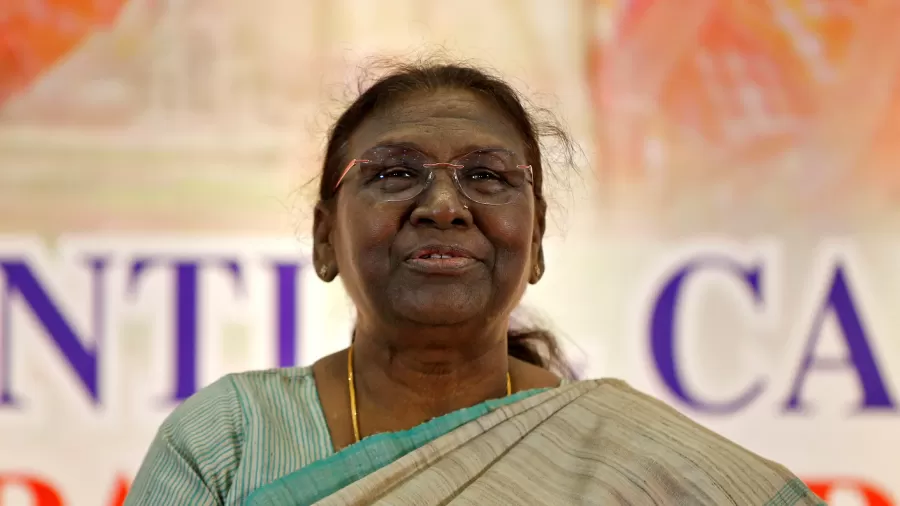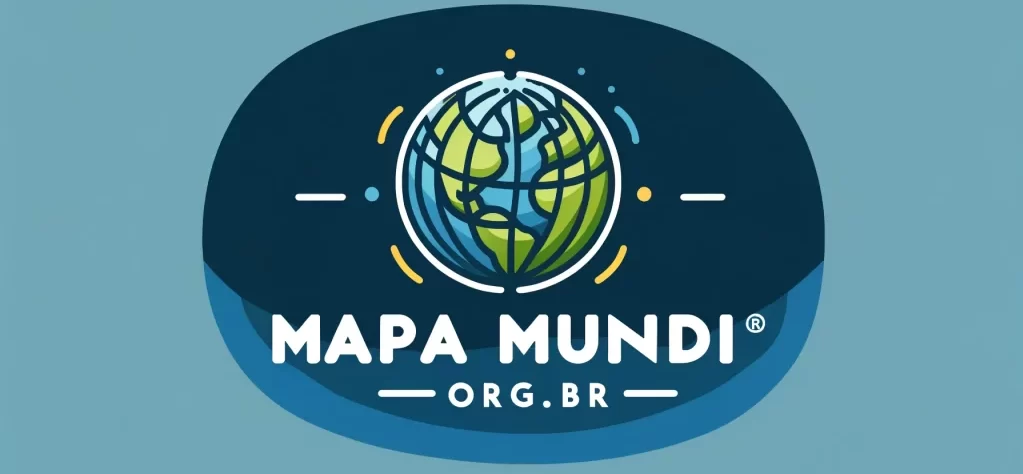
No último dia 18 de julho, uma mulher e membro de uma minoria – as chamadas “scheduled tribes” (“tribos designadas”) -, Droupadi Murmu, venceu as eleições presidenciais na India. Ela é uma líder tribal e membro do partido político “Bharatiya Janata Party”/BJP, atualmente no poder. Desta forma, tornou-se o(a) 15º presidente do país e, com 64 anos, o mais jovem. Ela será também a primeira pessoa da minoria tribal a assumir o cargo. No dia 25/07 Droupadi-ji prestou o juramento solene e foi empossada. Anteriormente, ela havia sido governadora do Estado de Jharkhand, na costa leste do país, de 2015 a 2021. Agora sucede na presidência a Ram Nath Kovind, igualmente membro da minoria das “scheduled casts” (“castas designadas”).
A candidatura de Droupadi-ji foi proposta pela coligação partidária “Aliança Democrática Nacional” / “National Democratic Alliance“ (NDA), que atualmente congrega 27 partidos políticos, liderados pelo BJP, nacionalista e de direita, presidido pelo Primeiro-Ministro Narendra Modi.
A eleição presidencial se processa no âmbito do legislativo. O futuro mandatário é escolhido por um colégio eleitoral composto pelos membros eleitos das duas casas do Parlamento (“Rajya Sabha”, a Câmara Alta/Senado; e “Lok Sabha”, Câmara Baixa/Câmara dos Deputados), pelos membros das assembleias legislativas estaduais e das assembleias legislativas de três Territórios da União. Embora o papel do Presidente da Índia seja sobretudo protocolar, ele se reveste de grande carga simbólica.
Neste contexto, a eleição de um membro das “scheduled tribes”/”scheduled casts” levanta a questão de quem são os “dalits”, sobretudo para nós, brasileiros, depois que o sucesso da novela “Caminho das Índias”, da TV Globo, trouxe o tema para o interior dos nossos lares de forma edulcorada e (compreensivelmente…) fantasiosa.
Quem são os “dalits”?
Para tentarmos entender este tema muito complexo é necessário mergulharmos, tanto quanto possível, no mar profundo do hinduísmo, que regulamenta a vida religiosa de 966.3 milhões de pessoas, ou seja, 79.8% da população da Índia, e buscarmos entender a questão das “varnas” e das “castas”, ainda que de forma bastante simplista, dada a profundidade da questão e do distanciamento com que as culturas ocidentais cristãs analisam os seus conceitos.
As chamadas “scheduled casts” e “scheduled tribes” estão entre os grupos socioeconômicos e políticos mais desfavorecidos da Índia. Estes termos são os inscritos na Constituição do país, porém durante grande parte do domínio colonial britânico, esta população era conhecida como “depressed classes”. Os termos “schedulued casts” e “scheduled tribes” foram popularizados por B. R. Ambedkar (1891-1956), o economista e reformador que presidiu a Assembléia Constituinte que elaborou e aprovou, em 26 de novembro de 1949, a Carta Magna, promulgando-a em 26 de janeiro do ano seguinte. Ele mesmo um “dalit”, Ambekkar tornou-se figura-chave no processo da elaboração do texto, devido aos cargos que ocupou e às suas intervenções e discursos no processo de negociação do documento. Foi por seu ativismo como presidente da comissão mais crucial da Assembleia – a Comissão de Redação – que se inscreveu no preâmbulo da Constituição que a Índia é “uma república soberana, socialista, secular e democrática”. Cada um destes termos é fundamental para que o país, com a enorme compexidade da sua sociedade, promova parâmetros imprescindíveis para o seu funcionamento.
“Dalit” (do sânscrito दलित, significando “quebrado/disperso”), por sua vez, também interpretado como “intocável”, é o nome que se dá às pessoas pertencentes ao estrato da população que está excluída do sistema das Varnas e suas subdivisões nas Castas, que constitui a espinha dorsal da religião hindu. A raiz deste conceito está no “Rig Veda”, compêndio sagrado do Hinduísmo que é o pilar da chamada “cultura védica” e do Vedanta (devanágari: वेदान्त), a tradição espiritual que busca através do Conhecimento compreender a natureza da Realidade, ou seja, da Existência. Esta cultura desenvolveu-se entre 1500 e 500 AEC.
O Rig Veda, que é mais antigo texto védico em sânscrito conhecido, debate as várias teorias a respeito da criação do Universo, entre as quais a batalha cósmica no processo de separação entre céu e terra. É neste contexto que se insere a origem da Existência, do Criador e da Criatura. Logo no seu primeiro capítulo – o “Hino da Criação” (Nâdsidiya) 10.129 – é tratada a teoria da criação do ser humano, advinda da separação pelos deuses do Ser cósmico ancestral, Purusha. No versículo 10.90.12 está escrito: “sua boca tornou-se o Brāhmin; seus braços tornaram-se os Guerreiros; suas coxas tornaram-se o Povo; e de seus pés nasceram os Śūdra”. São estas as Quatro Varnas – Brahmin, Ksatrya, Vaisya e Sudra – que conformam a hierarquia dos indivíduos na sociedade hindu e as tarefas ancestrais que lhes cabiam desempenhar: os brahmin seriam os sacerdotes e os letrados; os ksatryas os governantes e os guerreiros, encarregados da governança e defesa da sociedade; os vaishyas seriam a população em geral; e os sudras os servos. Destas quatro divisões nascem as milhares de castas, que de certa forma correspondem a atividades específicas dos indivíduos dentro da sua Varna.
Todos eles tiveram uma encarnação humana anterior, segundo o hinduísmo, que prega a metempsicose, ou seja, o processo de reencarnação da energia que habita todos os seres a caminho do “moksha”, sua depuração e libertação como energia pura. Os hindus os chamam de “twice born”. Os “dalits” seriam os impuros, ou seja, aqueles que estariam experimentando uma primeira encarnação humana, e cujo toque, ou até mesmo a sombra, para os hindus mais ortodoxos, conspurcaria a energia dos reencarnados. Por isto eram – e ainda são, em algumas partes da Índia considerados “intocáveis”. O Mahatma Gandhi, de sua parte, os chamava de “Harijans”, os filhos de Deus. As “scheduled casts” e as “scheduled tribes” correspondem a cerca de 16,6% e 8,6 %, respectivamente, da população da Índia. A Constituição de 1950 listava 1.108 castas, em 25 estados e 744 tribos, em 22 estados.
Desde a independência tem sido um esforço das autoridades romper com os preconceitos aguerridos contra os dalits no seio da população. O governo reservou-lhes quotas no serviço público e nas universidades, por exemplo. Um dos estigmas entranhados entre a população – e entre a comunidade internacional – é que se trata de pessoas desmunidas. Não é bem assim, acredito, porque fruto da sua vontade e do seu esforço alguns dalits vêm galgando espaços em todas as esferas profissionais. Entre eles há grandes empresários, acadêmicos, artistas, legisladores, etc, como prova o fato de os dois últimos Presidentes da Índia, serem, respectivamente, oriundos das “scheduled casts” e das “scheduled tribes”. Entretanto, este caminho é certamente muito mais árduo que para a maioria dos “twice born”. Daí o dever e empenho que cabe ao governo e às lideranças da sociedade em facilitar-lhes o caminho
Doutor em Direito Internacional Público em Paris. Ingressou na carreira diplomática em 1976, serviu nas embaixadas de Bruxelas, Buenos Aires, Nova Déli, Washington, Pequim, Tóquio, Islamabade (onde foi Embaixador do Brasil, em 2004). Também cumpriu missões transitórias no Vietnã e Taiwan. Viveu 15 anos na Ásia, para onde orientou sua carreira por considerar que o continente seria o mais importante do século 21 – previsão que, agora, vê cada vez mais perto da realidade.
